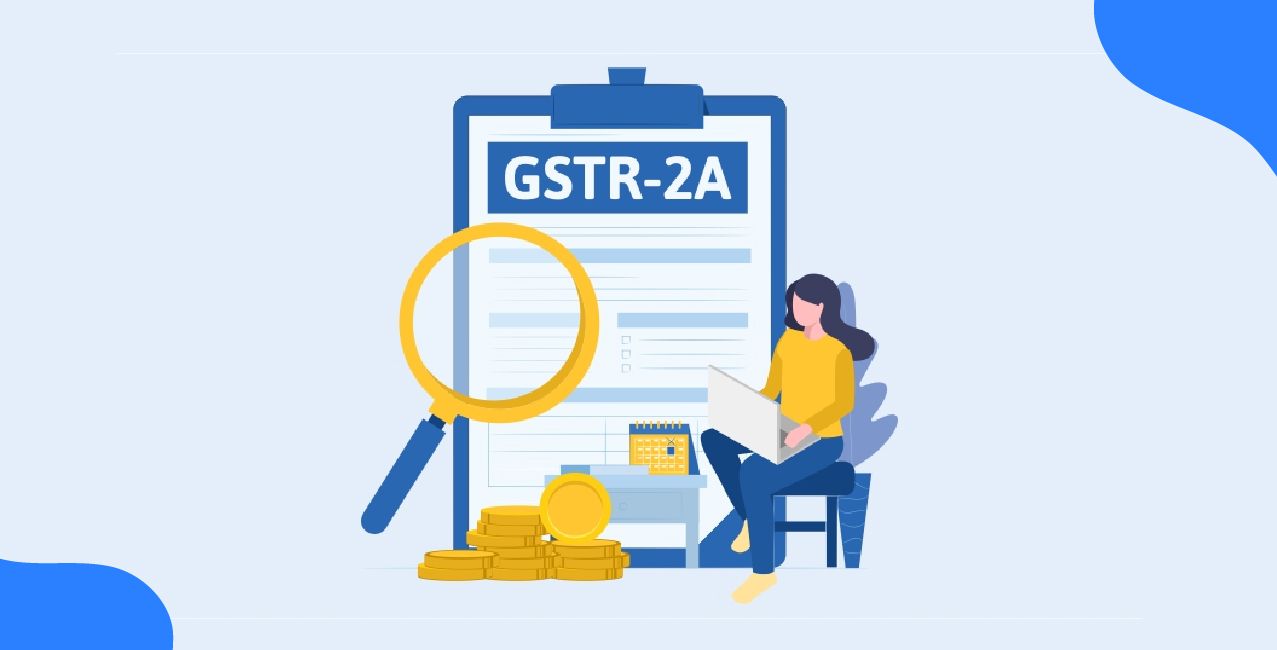
Author
LoansJagat Team
Read Time
5 Min
25 Sep 2025
Distinguishing GSTR 2A and GSTR 2B: Key Differences Simplified
Key Insights
- You can monitor your live data through GSTR-2A, which updates you regularly when suppliers file their returns.
- If you need a monthly reconciliation, GSTR-2B provides you with lump-sum data each month on the 14th.
- Both GSTR-2A and GSTR-2B are secure; you can verify the statements in various ways, as explained in this blog.
GSTR-2 was a dynamic, real-time form reflecting input tax credit (ITC) based on supplier-filed
GSTR-1. For example, if supplier A uploaded an invoice for Mohit on the 5th, it seemed in his GSTR-2A that day.
You can check the monthly statement that provides a close view of ITC and the generated due date for GSTR-1. Sohit can see the ITC for the previous, which helps him to access his GSTR-2B easily on the 14th.
If you are optimising ITC utilisation and allowing taxpayers to guide GST with benefits, then you have to understand the difference between GSTR-2 and GSTR-2B.
This blog helps you to understand the GSTR-2A and GSTR-2B. Now, let's discuss what GSTR-2 is.What is GSTR 2A?
GSTR-2A is a form that shows a real-time list of all the supplies you receive. It is automatically filled in using the information that your suppliers report in their GSTR-1 forms.
This form includes all invoices, credit/debit notes, and subsequent amendments uploaded by your suppliers.
If a supplier submits their GSTR-1 on the 10th, and you will see in GSTR-2A, then you check your purchase records.
To make sure your input tax credit (ITC) claims are accurate, compare your records with the GSTR-2A report.
This will help you spot any missing invoices and then, if there is any issue, quickly fix it with your suppliers, which allows you to make the most of your ITC.
Read More - GSTR 2A Explained: Filing Procedure, Format, Due Dates & Information Covered
What is GSTR 2B?
GSTR-2B is a monthly report that shows the overview of the input tax credit (ITC). It is automatically created on the 14th of each month and provides a fixed view based on what your suppliers have filed.
A business owner like Sohit can view his GSTR-2B. This document shows a complete and fixed list of all invoices, credit notes, debit notes, and changes from his suppliers.
GSTR-2B provides a stable, monthly ITC snapshot for assured reconciliation.
- Static Report: The report maintains a consistent state, unlike GSTR-2A, which can change frequently.
- Confidence in Reconciliation: Sohit can moderate his financial books for the entire month with confidence.
- No Disruptions: There is no worry that unexpected data changes will affect the reconciliation process.
- Monthly Overview: The static nature allows for a comprehensive view of financials without interruptions from new information.
This helps make following the rules easier and improves claims for input tax credits.
Form GSTR-2B is an automatic ITC statement created for every registered taxpayer. It is based on the information that suppliers provide in their Form GSTR-1/IFF/1A and Form GSTR-5, along with ITC received through Form GSTR-6.
This shows the amount of ITC available to the taxpayer for each document submitted by suppliers.
Bonus Tip: There's no direct penalty, but it increases compliance risk. As GSTR-2A is dynamic, an invoice might be visible initially but could be amended or deleted by the supplier later, leading to mismatches during reconciliation.
Reconciliation of GSTR-2A and GSTR-2B
If you compare the statements with your purchase records for the claimed Input Tax Credit, you need to know which suppliers have filed.
Let's take an Aman example for Reconciling GSTR-2A and GSTR-2B:
Aman uses an advanced GST filing tool. After the 14th of the month, he downloads his static GSTR-2B for a final, reliable list of eligible ITC.
Then, he cross-references this with his internal purchase register and the dynamic GSTR-2A to catch any differences, like a missing invoice from a supplier.
By identifying these gaps, Aman can promptly follow up with the supplier to ensure they file their GSTR-1.
This careful check helps him confidently claim his correct ITC in his GSTR-3B return. It ensures he follows the rules and stops any future tax issues.
Bonus Tip: A significant advantage of GSTR-2B is that it categorically segments ITC into eligible, ineligible, and ITC under reverse charge, providing much more precise guidance than GSTR-2A.
Also Read - GSTR 2 vs GSTR 2B: What Sets Them Apart?
Difference Between GSTR-2A and GSTR-2B
This table shows you the key features of GSTR-2A and GSTR-2B.
Recognising these differences is essential for accurate ITC reconciliation and ensuring compliance. Now, you know the detailed information about the GSTR2A and GSTR2B.
How GSTR-2A and GSTR-2B Affect Your ITC Claims?
You can keep an eye on your suppliers and verify that they file on time with GSTR 2A. You should use GSTR 2B for your final ITC claim in GSTR-3B.
Because GSTR 2A is not the final record, you could make mistakes if you rely on it. You can only claim the ITC for which you are truly qualified with the help of GSTR 2 B.
Conclusion
This blog helps you to understand the GSTR-2A and GSTR-2B, which are important for claiming ITC under GST.
GSTR-2A is like a live update that changes as your suppliers submit their returns. In contrast, GSTR-2B is a fixed monthly statement, like a snapshot taken on the 14th of each month.
Which one is better, the real-time tracking or the final monthly tracking? Both help you to claim your ITC accurately. Avoid compliance issues and maintain smooth financial operations without any last-minute surprises.
FAQS
Which form is more important for filing my GSTR-3B?
GSTR-2B is more critical. It's the recommended static statement for finalising your ITC claim to avoid errors.
Can I claim ITC if an invoice is in GSTR-2A but not in GSTR-2B?
No. You should only claim ITC for invoices that appear in your GSTR-2B, as it is the final, reliable list.
Can I claim ITC based on an invoice present only in GSTR-2A but missing in GSTR-2B?
Yes, but with caution. If an invoice is included in GSTR-2A (as the supplier has filed) but is missing in GSTR-2B (filed after the 13th), you can still claim it in GSTR-3B. However, ensure the supplier has indeed filed it to avoid future demand notices.
How do I handle missing invoices that don't appear in either GSTR-2A or GSTR-2B?
You must proactively follow up with the supplier to file their GSTR-1. ITC cannot be claimed if the supplier has not declared the supply in their return.
About the Author

LoansJagat Team
‘Simplify Finance for Everyone.’ This is the common goal of our team, as we try to explain any topic with relatable examples. From personal to business finance, managing EMIs to becoming debt-free, we do extensive research on each and every parameter, so you don’t have to. Scroll up and have a look at what 15+ years of experience in the BFSI sector looks like.

Quick Apply Loan
Subscribe Now


